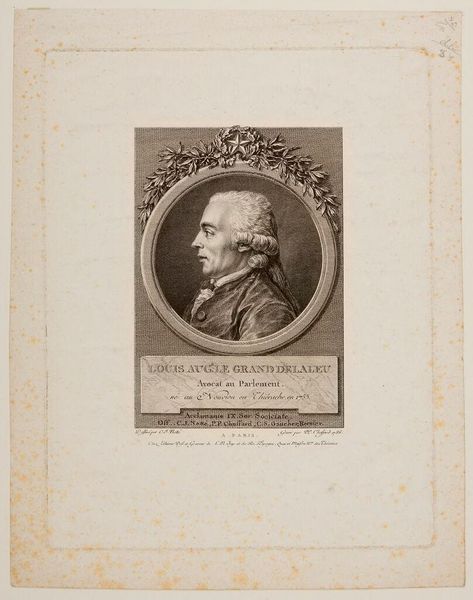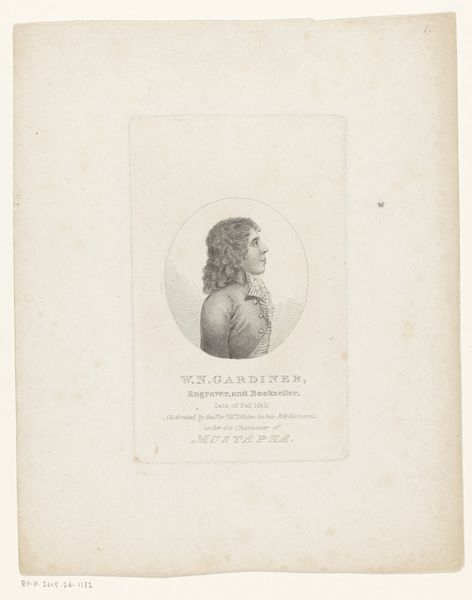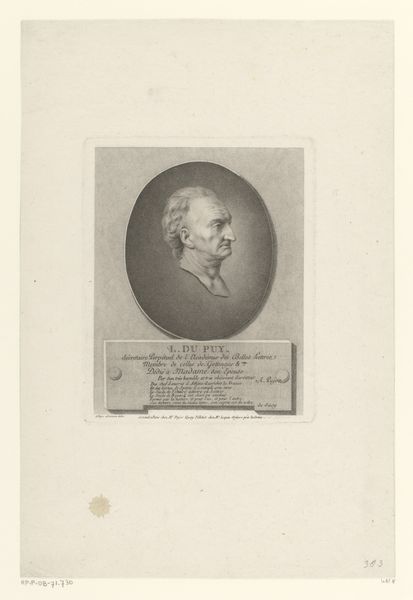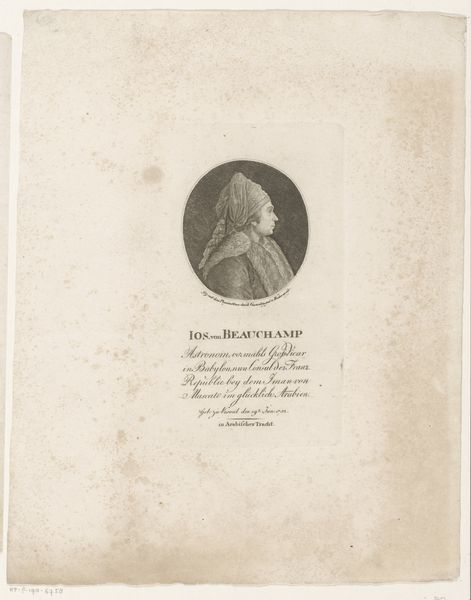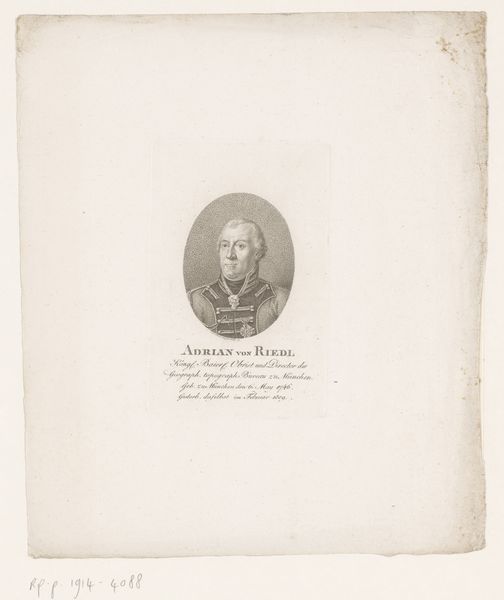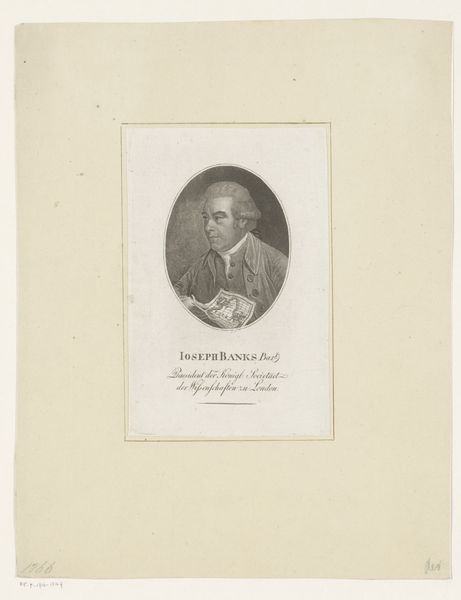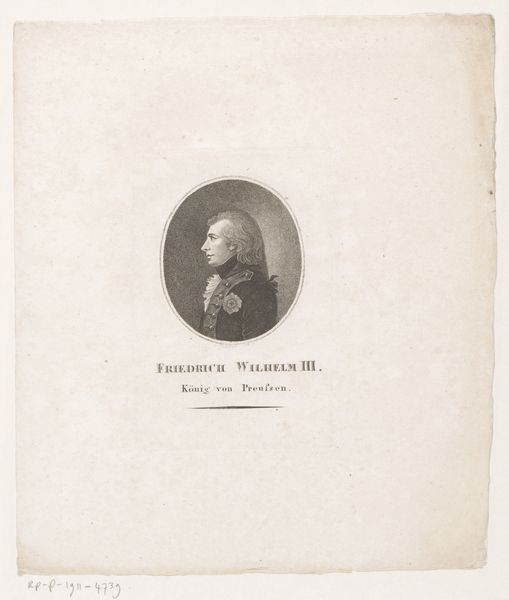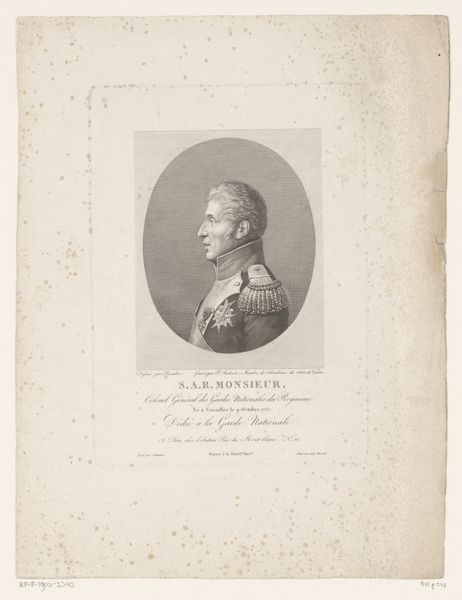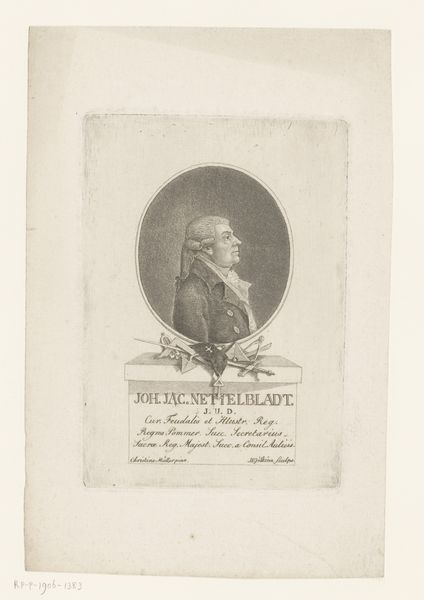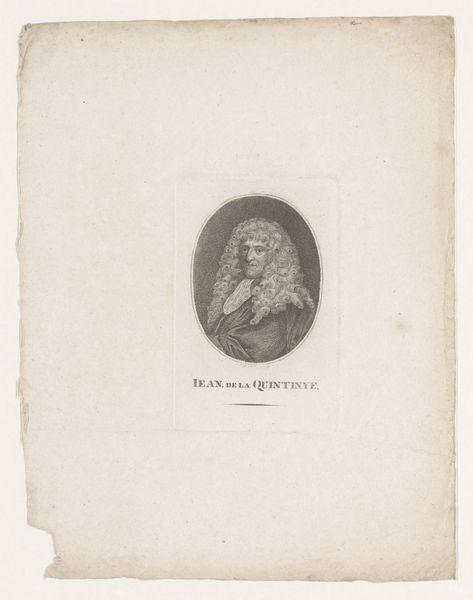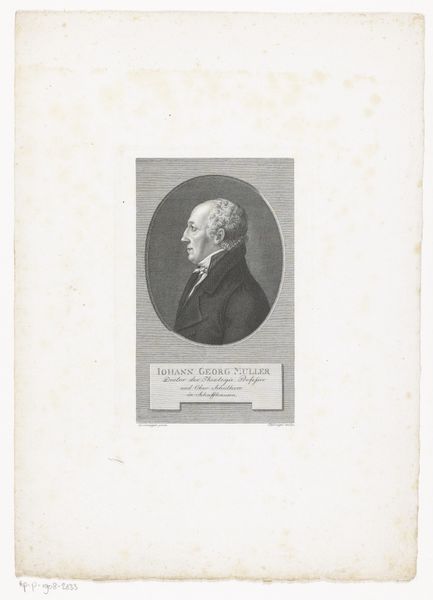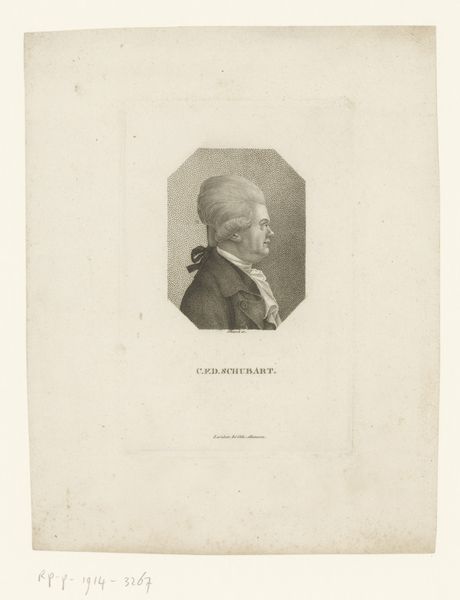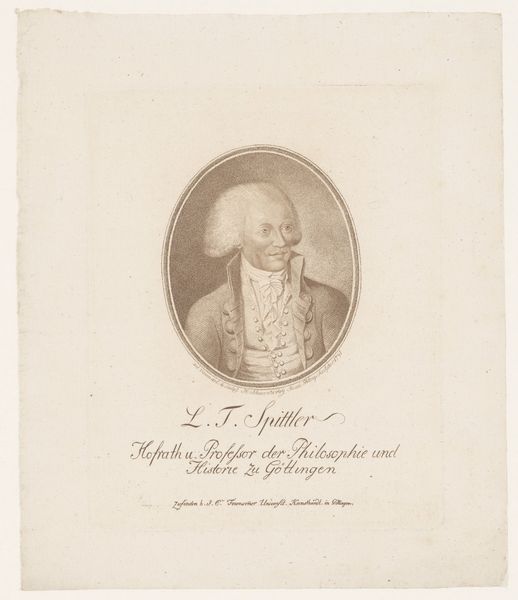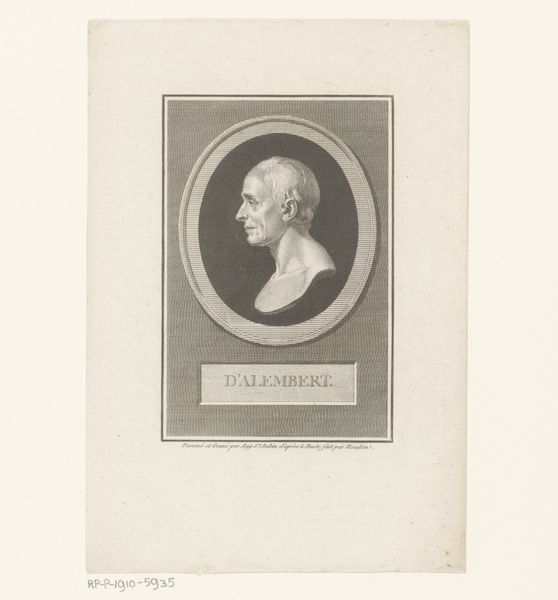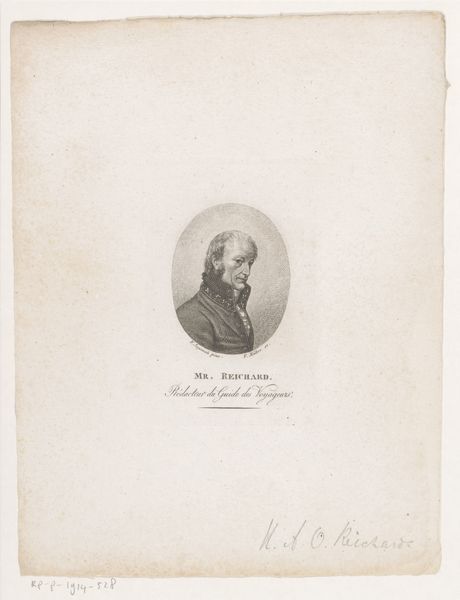
drawing, print, engraving
#
portrait
#
drawing
#
neoclacissism
# print
#
engraving
Dimensions: height 195 mm, width 137 mm
Copyright: Rijks Museum: Open Domain
Curator: What strikes me immediately is the graphic simplicity, almost severity, of the silhouette. The stark contrast of the black figure against the off-white ground, contained within that crisp oval frame... it speaks of order and precision. Editor: That's true, and it reflects the broader context. This is a 1792 engraving, a print titled "Silhouetportret van Gerrit Jan van Wij," currently held at the Rijksmuseum. These silhouette portraits were popular, but let's consider who Gerrit Jan van Wij was. The engraving labels him as an experienced surgeon and professor of obstetrics. In what ways was medical discourse shaped by the social power structures of his era? Curator: Right. So, formally, there's this fascinating dance between what is revealed and what is obscured by the silhouette itself. It emphasizes outline and profile, removing interior detail, reducing the man to an elegant, yet generalized form. We can then explore how, formally, the lack of interior detail contrasts with the lengthy titles provided to portray him, or what that contrast meant socially for medical figures during the rise of scientific inquiry in the late 18th century. Editor: Indeed. Think of how Enlightenment ideals intertwined with colonial and patriarchal power. Medical practices, theories of the body – all were being reshaped, but not neutrally. Gender and racial biases were inherent. In these visual ways of seeing, whose bodies and knowledges counted? Whose were erased, represented as simply flat shadows, nameless labor? Consider the racial implications of creating black and white prints during the height of colonialism. Curator: And it’s interesting how this flattening relates to Neoclassicism as an artistic movement as well. The focus is on clear lines, balance, an idealized image. It strives to present van Wij as a figure of rationality, intellect. The formality lends a degree of legitimacy to him. Editor: It's almost as though the portrait works to neutralize or transcend potential scrutiny, a way to perform the authority of the European male subject. Curator: Ultimately, it is thought-provoking how, formally, the portrait communicates power dynamics within the historical contexts of medicine, colonialism, and art itself. Editor: I think this close look, understanding art within social structures, is essential if we want art institutions to truly engage communities and advance a nuanced, equitable worldview.
Comments
No comments
Be the first to comment and join the conversation on the ultimate creative platform.
